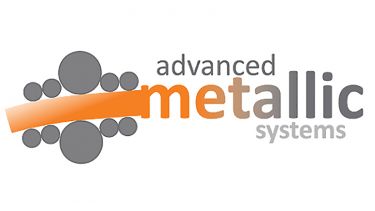Additive manufacturing promises geometric freedom, but currently it is still limited in terms of consistency and cost which limit its usefulness at the industrial scale. An alternative method to full part production via AM is to combine it with a joining process such as brazing, a process similar to soldering, but at temperatures above 450 °C. Brazing offers high strength joints without the local microstructural damage attributed to welding. Frances's research investigates the joining of machined and AM 316L stainless steel to better understand how brazing will be impacted by different manufacturing routes. Further from this, it probes how fusion-relevant materials made via AM, such as tungsten and copper, may interact when joined.
Metal additive manufacture (AM) and brazing are two processes in which a metal is melted and re-solidified, but this is where the resemblance stops and so the research topics have remained distinct. However, currently AM faces limitations in build size vs part resolution, the consistency and repeatability of part production, and cost, which still hinders the adoption of AM as a standardised large scale manufacturing technique. This means that AM could benefit from the alternative joining method of brazing, which allows complex geometries to be produced via AM and then joined to bulk parts.
Frances's PhD research investigates the potential of brazing, using a molten filler metal, of AM parts. It looks at joining AM and machined 316L stainless steel with two types of commonly used filler metals (AgCuZnSn via furnace brazing and CuGeNi via vacuum furnace brazing). It aims to understand how the native surface roughness, which is typically an order of magnitude rougher than the industry standard practice for brazing, impacts the resultant joint fill and thickness and whether time consuming surface processing is actually required for brazing. The joint fill is investigated via x-ray computed tomography and correlates it to surface roughness, and determines that reducing the joint thickness is limited by the high asperities of the AM surface.
Alongside this, the impact of the non-equilibrium microstructure of AM parts (long columnar grains oriented in the build direction) is investigated and evidence suggests that phase transformations which occur in joints formed using traditionally machined base metals, can be effectively suppressed. These investigations feed into the final research question - does using a native AM part, straight from the 3D printer, impact the strength of the resultant brazed joint?
Coming towards the end of my PhD, I really see the value of having done a doctorate as part of the Advanced Metallic Systems CDT. It's allowed me to develop my professional or pawer skills alongside my research, and given me a fantastic network of people. Beyond this, my PhD is sponsored by the UK Atomic Energy Authority (UKAEA) and it's been really beneficial to understand the impact of my research in the grand scheme of making power production through nuclear fusion a reality!
Frances Livera
IMPACT
The geometric freedoms promised by AM is of great interest to the nuclear fusion industry, and many other areas. Currently it is still limited in terms of consistency and cost which prevents its usefulness at the industrial scale, but brazing can offer the alternative of producing the highly technical elements with AM and then combining them with parts made via more traditional, cheaper methods. Brazing can offer the high strength joints required without the local microstructural damage attributed to welding. This could impact the costs and safety of nuclear energy production.
BIO
Frances Livera is a final year PhD student in Materials Science and Engineering, specialising in Metallurgy, where her work is sponsored by the UK Atomic Energy Authority. As part of the Advanced Metallic Systems Centre for Doctoral Training (CDT), she has completed industry facing projects and professional skills development alongside my research. She has a Masters degree in Chemistry, and the CDT was a great way to transition into this discipline.
Frances currently holds the position of co-president for the Faculty of Engineering Student Committee, which aims to improve the PhD experience through networking, socials and better all-round support. She advocates for this as PhDs can be quite isolating when you're getting started and forming networks around you is something she believes is vitally important.
In her free time she enjoys knitting, reading a good book, and exploring everything Sheffield has to offer - from all the great food options to getting outdoors in the Peak District for a hike!
EQUIPMENT
Aconity3D Mini, Royce Discovery Centre
Aconity3D Lab, Royce Discovery Centre
FEI Inspect F50, Sorby Centre
JEOL 7900F field emission gun (FEG) SEM, Sorby Centre
Zeiss Xradia 620 Versa X-ray Microscope (XRM), Sheffield Tomography Centre
Torvac T200 vacuum furnace, UK Atomic Energy Authority, Culham
Alicona InfiniteFocusSL, Tribology Group, Mechanical Engineering (TUOS)



